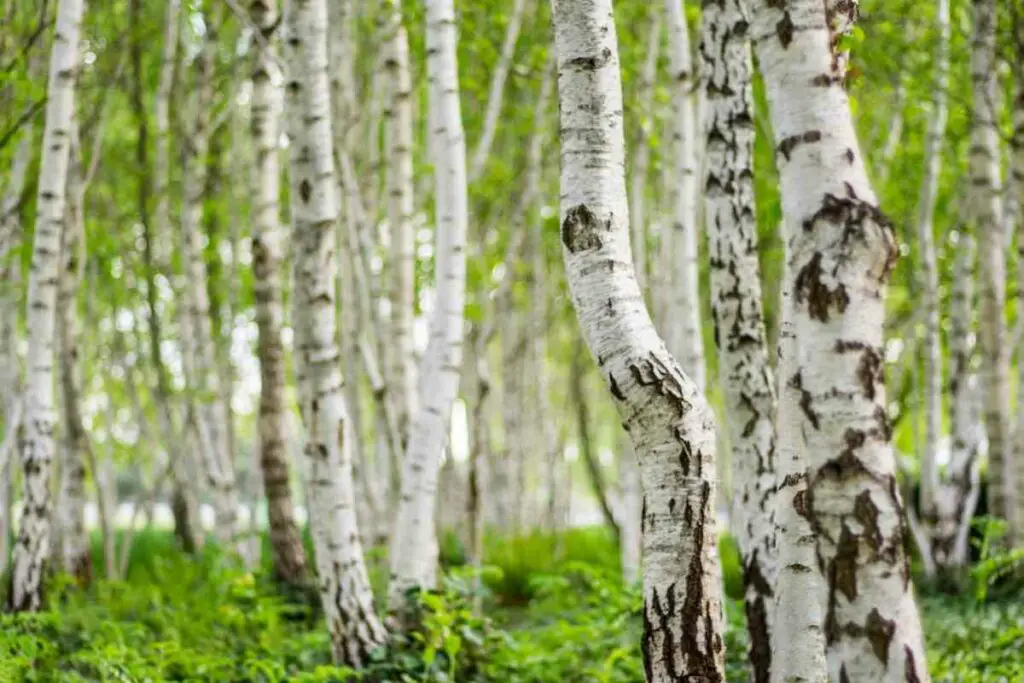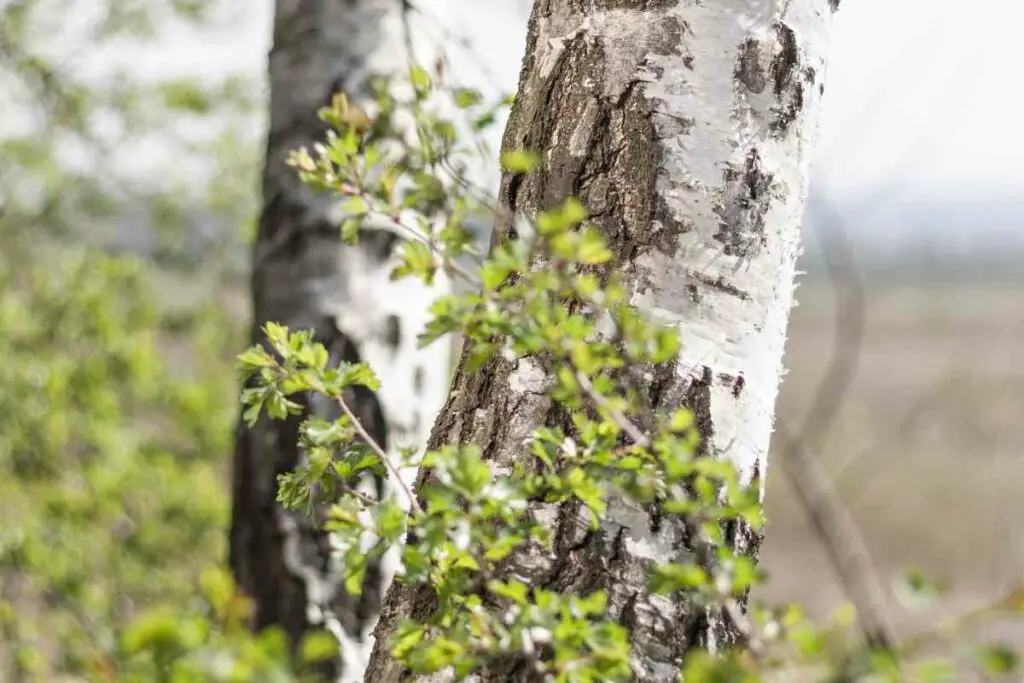Worried about the amount of bark that your birch tree is shedding? No need to panic! Birch trees peeling or shedding bark is as natural as humans shedding skin. It’s just the tree dying outer layer of bark naturally removing itself to make room for the new.
Table of Contents
Why Does the Bark of Birch Trees Peel?
The bark of a birch tree can start peeling off for many different reasons, and most are nothing to worry about – this is quite a natural process. You might even want to peel some off yourself if it is looking unsightly.
Birches are famous for the way that their bark peels, and it makes them extremely attractive trees, with lots of contrast between the smooth, polished areas and the ragged, textured tears. However, you might be wondering what purpose the bark serves and why the tree loses it after a while.

What Is the Point of Bark?
The bark is a layer of protection that helps to reduce water loss and guard the tree against insect infestations. It serves to prevent damage to the soft, inner tissue, which is still alive and is important to the growth of the tree.
The bark of a tree serves many functions, but the main one is protecting the tree from damage. If that is the case, why do birches shed it? Why wouldn’t a birch want to retain its protective layer for as long as possible?
What Are the Top Reasons for Peeling Bark?
The main reason that birch trees peel is that the inside of the tree is growing, and the outside is rigid. Bark cannot stretch, so unless it splits or tears away, it will restrict the growth of the inner cells, and the birch will not be able to grow any further.
All trees have to deal with this problem, but many solve it by growing bark that cracks and becomes textured. Think of this like the wrinkles in the skin that has stretched – it allows for growth and flexibility.
However, the birch has smooth bark, and therefore it cannot depend on flexibility, because the bark is held taut against the inner layer, and thus restricts its growth. The only solution, therefore, is to shed the old bark and grow new bark.
In the same way that snakes shed their skins, birches must shed their bark to get bigger. Because they are fast-growing trees, this can be quite noticeable, although all trees do shed their bark – just less visibly for most kinds.
Removing Lichens
Another advantage that this tree gains by losing its bark is that doing so removes lichens and mosses from the surface of the tree. It may also help the tree to shed parasites, infections, fungi, etc.
By dropping off its outer layer, the tree renews itself and reduces the dirt on its surface. Although a bit of moss and lichen is unlikely to do any harm to the tree, a buildup of them could be damaging, trapping moisture against the trunk and leading to rot.
Instead, the birch sheds its bark and drops it aside, leaving its surface clean. This connects to the third reason for peeling bark.
Improved Photosynthesis
Birch trees can photosynthesize through their bark, and this means that it is in their interests to have bark that is free from other substances like moss. The lighter they can soak up, the better they can photosynthesize.
This is extremely important in winter when the tree has shed its leaves but may still have access to some sunlight. It can give a birch a head-start on other trees when spring approaches.

Should I Remove Peeling Bark?
If the peeling bark bothers you, you can give it a gentle tug. If it comes off freely in your hand, it was ready to drop and its loss will not do the birch tree any harm it may even help it a little by giving the inner bark more access to sunlight.
However, you should not wrench bark off your birch tree for any reason. If it does not come away easily, it is still attached to living tissue inside the trunk and protects this tissue. Pulling it off could expose your tree to the risk of infection or parasites, and you shouldn’t do it.
On the whole, it is best to let your birch shed its bark naturally, rather than interfering. You might damage the tree and you won’t do much to help it by removing the bark, even if it looks and feels loose.
Final Thoughts
Birch tree’s bark peels and shed just as naturally as humans shed skin. As the old layer of bark begins the peel new bark takes its place to prevent insect infestation and helps to reduce water loss. Removing the dying bark from the birch trees can help to allow sunlight onto the inner bark, reframe from removing any bark that isn’t peeling as it may affect the inner layer of the tree.













